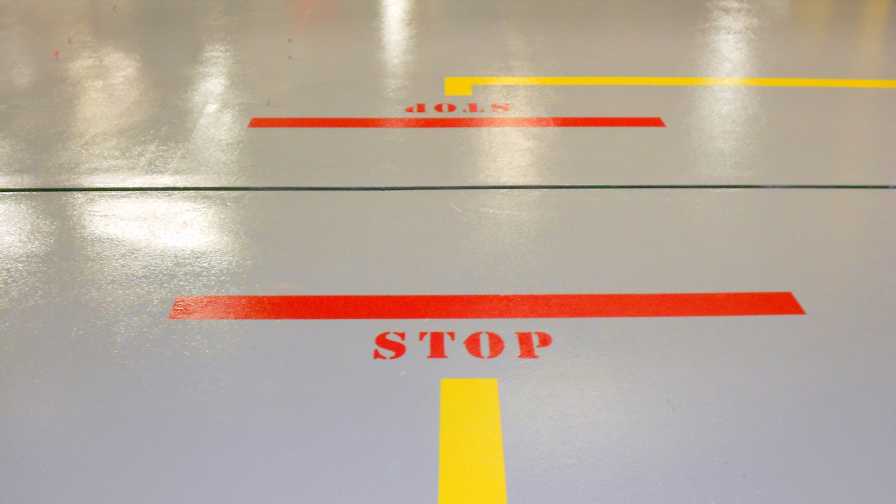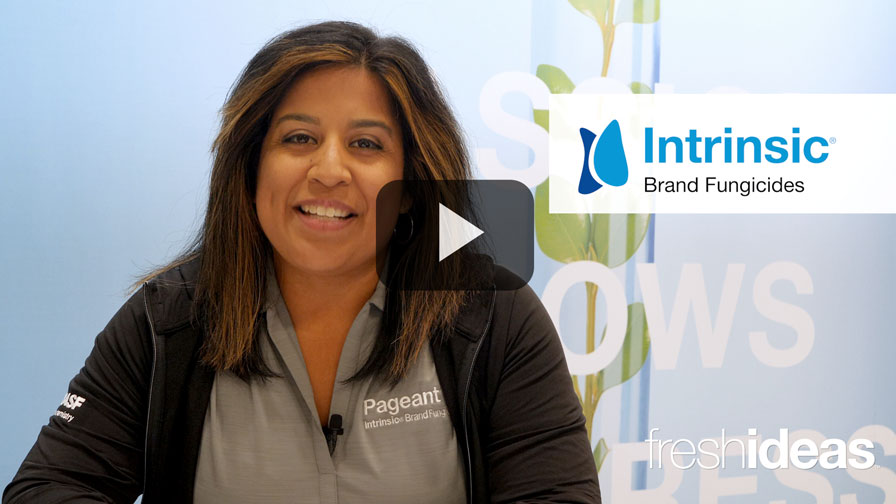Ways Optimal Greenhouse Flooring Can Grow a Better Bottom Line

The right concrete floor coating in greenhouses and growing facilities can help protect the floor as well as employees. Photo courtesy of Florock Polymer Flooring
Whether an urban vertical farm in a converted multi-level warehouse or a single-story greenhouse, the number of environmentally controlled growing facilities continues to expand and evolve. Along with the unprecedented ability to influence crop yields, these operations nevertheless face many of the same modern challenges as traditional outdoor farmers. Depending on location, the cost of basics, such as energy, water, and transport to market, continue to rise. In such an economy, it makes sense to consider how flooring, ubiquitous throughout any facility, can help growers improve their operating efficiency and bottom line.
When selecting flooring for their facility, growers have typically been presented with a choice of 1) leveling and tamping down dirt floors, 2) placing gravel and/or pavers, or 3) pouring concrete. As with all major decisions, the cost of labor and materials get weighed against many other factors unique to each grower’s business. Considerations such as geographical location, access to natural light, humidity levels, use of fertilizers and chemicals, drainage, overall operation size, the use of wheeled carts or other vehicles, and various other concerns can come into play.
Figuring out Floors
To their consternation, facility managers often find that the consistently moist, warm environment they work so hard to maintain for the benefit of their crops also provides an optimal ecosystem for a host of undesirable microorganisms. Gravel and dirt floors present the greatest risk of contamination, as they inherently cannot be sanitized. Similarly, the dark, damp spaces between pavers make great hiding places for mold and fungi to proliferate.
Compared to these options, bare concrete with minimal floor joints can seem ideal. For example, in more extreme climates, the thermal mass of concrete can help moderate dangerous indoor temperature fluctuations. Concrete floors also enable owners to install in-slab heating systems where needed.
However, even high-quality concrete can present costly drawbacks for growers when not properly protected. Consider these challenges and proposed remedies:
- Bare untreated concrete is porous by nature, thus enabling water, chemicals, and other substances to enter the slab matrix. This can cause and/or accelerate concrete deterioration, which can eventually lead to expensive repairs or even total slab replacement. By installing a moisture-tolerant, chemical-resistant coating, facility managers can help safeguard the long usable life of their concrete investment.
- Fertilizers and chemicals, whether organic or manufactured, can leach through porous slabs to contaminate the soil and groundwater below. In contrast, an impervious industrial-grade coating can help keep spilled materials on the floor surface, enabling proper cleanup in accordance with local regulations.
- In damp or wet conditions, smooth floor surfaces can create slip-and-fall hazards for employees and visitors. Resin-based concrete floor coatings offer a variety of traction levels, which can be customized to facility needs during the installation process, helping to minimize injuries and associated costs.
- Uneven floor surfaces invite the formation of puddles, encouraging microorganisms and insects to breed. Fluid-applied floor coatings and resinous mortars can be used to correct the floor slope, helping to ensure proper drainage and eliminate the risks of standing water.
- Bare concrete slabs that absorb undesirable substances can be difficult to sanitize properly. Juxtapose this with a moisture tolerant, chemical, and thermal shock-resistant floor coating, which can be easily cleaned, withstanding exposure to harsh detergents, disinfectants, power sprayers, and even steam-cleaning, enabling ideal facility hygiene.
- Bare concrete tends to stain from spills and embedded soil, creating a dark colored floor surface that absorbs, rather than reflects, existing light. For locations that are either partially or wholly dependent on artificial lighting, having a light-reflective coating on the floor makes the most of available overhead illumination, helping reduce the need for additional fixtures, and enabling lower energy consumption and costs.
Concrete Floor Coatings
When considering a protective floor coating, managers may find themselves facing a seemingly endless array of product types, including a number of different epoxy and urethane systems. While the selection can seem overwhelming, the answer for growing facilities is simple. Urethane mortar, also called “cementitious urethane,” was designed specifically for use in continually moist industrial environments with potentially dramatic temperature swings and exposure to extreme pH substances and other chemicals. It is ideal as a protective concrete floor coating in greenhouses and growing facilities.
Urethane mortar flooring can provide unique benefits, demonstrating:
- Zero to very low volatile organic compounds, low odor installation and quick turnover
- Excellent resistance to chemicals, extreme pH substances and staining
- A choice of different gloss levels, light-reflective colors, and customizable slip-resistance
- Outstanding abrasion and impact resistance, plus good compressive strength
- High tolerance for ongoing moist or wet conditions, including the option to be installed over damp concrete
- Exceptional thermal shock resistance, maintaining a tenacious bond to the concrete substrate in the face of dramatic temperature swings and steam-cleaning
Properly protected concrete floors support growers’ efforts to minimize contamination and infestation, reduce energy consumption, as well as increase operational safety and efficiency.










